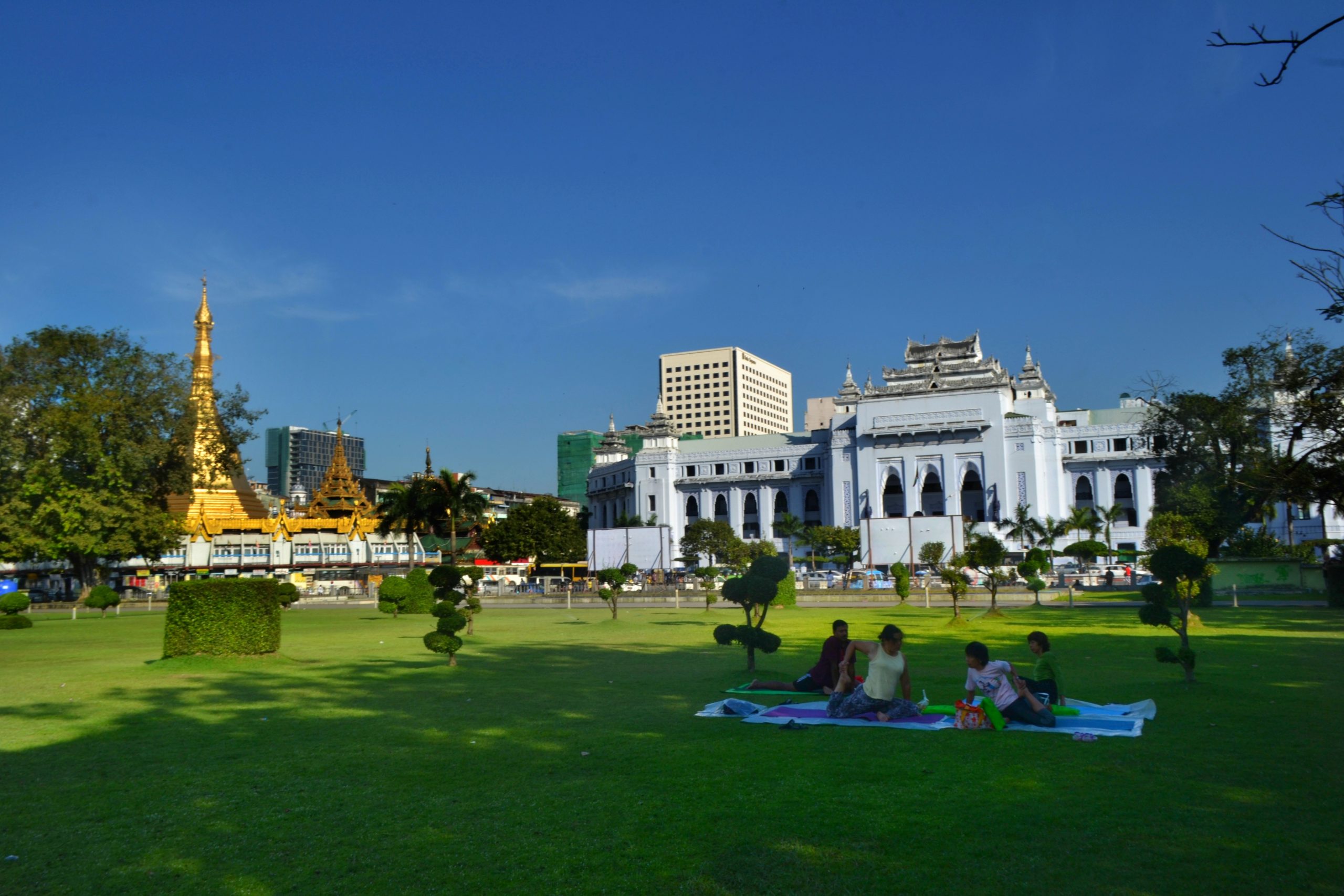
Yay Chann argues that Yangon City’s declining green spaces is bad for its citizens, climate change resilience and tourism.
Another Development (AD), a local organisation, has developed this paper to understand some of the challenges relating to green spaces in Yangon. The paper identifies some next steps for positive reform, highlighting the past-to-present of green spaces in Yangon City. In this paper, we limit the definition of green spaces to focus mainly on accessible public parks in Yangon City. Although this does not comprehensively account for all green spaces in Yangon (such as area with vegetation but no parkland, greened/regenerated street etc.), it was necessary to set this limitation so we could make conclusive statements about the amount of green spaces in Yangon based on available data.
Green spaces play a key role in the quality of urban communities in cities, with benefits ranging from the health and well-being of individuals and their relationship with nature, to the regulation of climate impacts, branding, economic development, tourism, character, and culture of a city. The importance of green spaces to cities has been growing globally, and they have come to play a key part in the quality of urban communities in cities.


There are many challenges with regard to maintaining current and creating new accessible green spaces for an increasing population in Yangon City. The Playgrounds, Parks and Gardens Department’s goal to have a playground in each ward and a park in every township is a welcome start, however, there is much more work to be done to create a Yangon in which increased and improved urban green spaces allow for the well-being of all citizens.
A green space strategy should be developed that ensures the expansion of public parkland in Yangon City to satisfy the WHO’s standard of nine square meters of green space per person. Recommendations relating to parks and green spaces laid out in YHT’s Yangon Heritage Strategy should be supported and committed to. Also needed is enhanced collaboration among YCDC agencies and departments to improve urban planning and better meet the needs of the residents.
Civil engagement and public voices are not sufficiently heard in urban green space planning and development in Yangon. YCDC should ensure that inclusive public participation is practiced in all Yangon City urban planning projects.
A number of relatively simple improvements to improve public parks should be implemented such as growing more shady trees, sports facilities and simple exercise machines, trash bins, lighting, benches and public seating areas, educational tools for children to make parks more interactive, and the removal of access fees for park facilities such as public toilets. Increased maintenance including water sprinkling and trash collection would be beneficial, as would promoting the holding of events such as educational, literature, and celebrity talks and other ceremonies in parks, as a way to attract users and promote tourism.
Finally, ensuring that public parks are accessible for all kinds of people including disabled people, and improving the safety of parks through increased security staff, would enable parks to be shared by all, and for people to feel safe when doing so.
Green spaces will play a crucial role not only in the quality of life for the people of Yangon, but also in the economic and environmental future of the city. Additionally, as Myanmar undertakes widespread democratization across the country, green spaces can be a contributing factor in the formation of a democratic society, and a tool for strengthening social inclusiveness and cultural diversity.
We need to call on YCDC, Yangon Regional Government, MPs, and CSOs working in this field, to act on the ideas in this paper and make green spaces an issue that matters, so that the future of Yangon City resembles the vision and ambitions of its citizens.
Yay Chann is a Knowledge Seeking Analyst at Another Development (AD) Policy Think-Tank, and works on urban planning project. His recent research focuses on urban green space, and urban water supply.
AD (Another Development) is a local Myanmar think-tank and a non-profit organization. AD’s work focuses on five main thematic areas: Human Rights, Multiculturalism, Decentralization and Federalism, Rural Economic Development and Social Enterprises and E-government and E-citizen. AD was set up in 2015 specifically to address some of the problems besetting Myanmar society in the new era and to advocate for public policy improvements.
Like This Article
November 22, 2023
July 13, 2022

Center for Southeast Asian Studies, Asian Institute 1 Devonshire Place Toronto, Ontario, M5S 3K7, Canada
©TeaCircle All Rights Reserved 2023